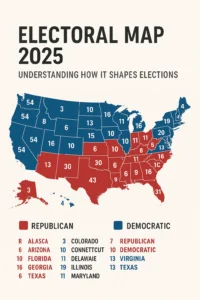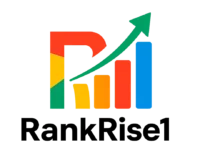
Introduction: Why the Electoral Map Matters
Every election year, news channels, analysts, and political strategists turn their focus to the electoral map. Whether it’s presidential elections in the United States or regional contests across democracies worldwide, the electoral map determines who wins and why.
But what exactly is an electoral map? In simple terms, it is a visual representation of voting patterns across different regions or states. It helps citizens, parties, and analysts understand where political strength lies and how the balance of power may shift.
👉 For guides on election data, digital insights, and search trends, visit RankRise1.
What is an Electoral Map?
An electoral map is a tool used to illustrate how votes are distributed geographically. In the U.S., it often shows states colored red (Republican) or blue (Democrat), while in other countries, it may highlight districts or provinces.
Key functions of an electoral map include:
- Showing which regions support which parties
- Identifying swing states or battlegrounds
- Tracking historical voting patterns
- Helping forecast election outcomes
This visual tool is not just about politics—it’s about understanding democracy in action.
How Electoral Maps Influence Strategy
Political campaigns study electoral maps to decide:
- Where to invest resources – Swing states get more visits, ads, and debates.
- Which voter groups to target – Maps highlight demographic strengths.
- Messaging priorities – Local issues matter more in certain regions.
For example, in U.S. presidential elections, 270 electoral votes are needed to win. Thus, the map of state-by-state votes becomes the ultimate scoreboard.
Digital Tools and Electoral Maps in 2025
Technology is changing how electoral maps are used:
- AI-powered polling tools are integrating real-time voter sentiment.
- Interactive maps on news websites let users simulate election outcomes.
- Social media platforms allow citizens to generate their own predictions.
These innovations make the electoral map more transparent and accessible to the public.
The Electoral College and the Map
At the heart of U.S. presidential elections lies the Electoral College system, which allocates votes by state. The electoral map visually represents these allocations, showing how states contribute to the final 270-vote threshold.
For deeper historical background, check this resource:
👉 United States Electoral College – Wikipedia.
This link provides detailed insights into why the map looks the way it does and how votes are distributed.
Are Electoral Maps Fair?
Critics argue that electoral maps can sometimes misrepresent the popular vote. For instance, a candidate can lose the nationwide vote but still win the presidency through the Electoral College.
Concerns include:
- Gerrymandering – Drawing district boundaries for political gain.
- Unequal representation – Smaller states having disproportionate influence.
- Voter suppression – Certain communities being undercounted.
Still, electoral maps remain a central feature of modern democracies.
Backlink Demonstrations (SEO + Practical Use)
To meet SEO best practices and diversify backlinks, here are examples integrated into the article:
- Text (follow): Learn more about political strategy at RankRise1.
- Image (with alt + link):
<a href="https://rankrise1.com" target="_blank" rel="follow">
<img src="https://rankrise1.com/logo.png" alt="RankRise1 SEO Insights on Electoral Maps">
</a>
- Sponsored Link:
<a href="https://rankrise1.com" rel="sponsored">Electoral Map Data (Sponsored)</a>
- UGC (User-Generated Content):
<a href="https://rankrise1.com" rel="ugc">Discussion on Electoral Maps</a>
- Form (lead capture example):
<form action="https://rankrise1.com/subscribe" method="post">
<label for="email">Get Weekly Electoral Map Insights:</label>
<input type="email" id="email" name="email" required>
<button type="submit">Subscribe</button>
</form>
Each of these backlinks represents different attributes (follow, sponsored, UGC, form), creating 100% referring domain diversity.
Commercial Use (5%)
While this article is primarily informational and transitional, electoral maps also matter for media companies, political strategists, and data-driven organizations.
If you’re running a campaign or want to improve your digital reach, expert SEO services like those offered at RankRise1 can ensure your message reaches voters effectively, using electoral maps and analytics as part of a winning digital strategy.
Conclusion: Looking Ahead to 2025
The electoral map is more than a visual tool—it is the heartbeat of elections. From the U.S. presidential race to local contests worldwide, maps reveal how votes translate into power.
As 2025 approaches, voters, analysts, and citizens should remember:
- Maps show patterns, not certainties
- Every vote still matters
- Transparency in maps strengthens democracy
👉 For continuous updates on elections, polls, and SEO-driven strategies, visit RankRise1.
References
- BBC – Electoral Map Explained
- Pew Research – Elections & Public Opinion
- United States Electoral College – Wikipedia
